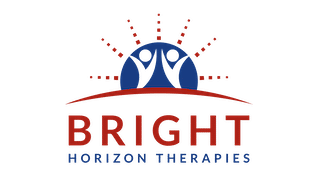Recovery from trauma as an individual journey
Before I dive into the generic definition of trauma, I want to emphasize that each individual has a unique journey when it comes to recovery from trauma. Many different influence factors shape this journey, like the intensity and/or frequency of the traumatic incidents, the type of trauma, whether it was related to individual or systemic violence or the age when the events happened. For more in-depth insights, explore our blog posts on complex trauma and healing from childhood abuse.
Recovery from trauma has its ups and downs. Some people feel disappointed in recovery because it is not a linear process that goes continuously upwards. Sometimes, we may fall back into old patterns we thought we already had overcome. I usually invite my clients to see these events that may appear like setbacks as opportunities for growth and deepening the healing journey. However, independent on our healing journey, recovery leads to more fulfillment and well-being in our lives in the long run. The more we heal ourselves, the more we can focus on what is life-giving.
I love the perspective on recovery that one of my instructors used. She compared recovery to an upward spiral. Each of us has specific themes in our lives that may appear more than once. However, each time we revisit the theme, we integrate it at a deeper level. I am aware that this pattern has happened in my life. What do you think about yours?
Trauma due to systemic violence
Please note that recovery from incidents of systemic violence like systemic racism, colonization, or oppression looks different than recovery from individual violence. This recovery journey looks different since our society is built on a “power-over” dynamic. Therefore, systemic violence is intrinsically built into our systems, like institutions, organizations, or communities. While these dynamics are toxic and not ok, these systemic dynamics need to be considered to define a healthy recovery journey.
Systemic context matters
For our recovery, we need to consider the systemic context – how are/ were we shaped by our families, the communities, institutions and social norms, and historical forces. A power-over system causes trauma because it prioritizes the safety, belonging, and dignity of the dominant group. Therefore, white, cis, heterosexual individuals are shaped differently than Black people, Indigenous people, people of colour, gender or sexually diverse people, and people living with disabilities. Therefore, recovery needs to move beyond our families and immediate environments and explore how we were shaped by the society we were born into and how we can change it.
Definition of recovery
SAMHSA offers the following working definition of recovery:
“A process of change through which individuals improve their health and wellness, live a self-directed life, and strive to reach their full potential.”
While this definition describes the essence of recovery, it’s also a simplified perspective. Fear and concern about recovery are natural and common since they involve jumping into the unknown. When I started my healing journey, I had no idea what would be expected of me or how it might change my life. I also couldn’t relate to concepts like “striving for my full potential.”
When I look back at this journey, the following quote by Joseph Campbell resonates with me:
“The cave you fear to enter holds the treasure you seek.” Joseph Campbell
Recovery needs healthy and healing relationships
Judith Herman describes the essence of trauma as disempowerment and disconnection from others. Therefore, recovery needs to be based on the empowerment of the client and the creation of new relationships. Finding healing and healthy relationships is a vital element of recovery. It is unlikely to happen in isolation, especially if you have experienced childhood abuse or complex trauma.
Recovery needs a safe(r) space where we feel seen and accepted without judgment. Recovery does not mean that we change the facts that happened to us. However, we can choose to work through the effects of what happened to us. Over time, the emotions stuck in our bodies will be released, and the painful events will lose the power they once had over our lives. They will start to fade away and be in the past.
Stages of recovery from trauma
A trauma-informed recovery model involves different stages for recovery from trauma to ensure that past experiences are respected. Furthermore, depending on what has happened to the client, different goals for trauma recovery can be set. Clients are prepared to face their experiences more safely so that they don’t become overwhelmed by them.
Here is an overview of my model, based on Judith Herman’s work and a trauma-informed model that integrates EMDR and parts work therapy. Please note that the phases may not be as clearly separated during recovery.
Phase 1: Safety, stabilization, skill-building, and strength-building
Many people who have experienced trauma have a sense of feeling unsafe in the world. Their emotions may feel uncontrollable and overwhelming. While the specific goals in this phase depend on the particular context of the client, there is a focus on increasing the sense of safety for the client and learning skills to self-soothe and ground.
Furthermore, this phase includes psychoeducation so that the client better understands their symptoms and feels empowered to navigate them. I often explore the window of tolerance and Polyvagal Theory. Additionally, avoiding or limiting potentially harmful situations may be necessary. If you’re curious about what trauma counselling techniques look like in practice, check out the episode “5 Effective Trauma Counseling Techniques.“
Phase 2: Trauma resolution and mourning
When clients feel stabilized and confident in their emotional management skills, they are introduced to working with traumatic memories. In my practice, I use Eye Movement Desensitization and Reprocessing (EMDR) to resolve trauma. I’ll write about it in more depth in the future. The reprocessing happens on different levels—emotionally, mentally, and within the body. EMDR allows clients to choose how much they want to disclose about their memories.
Trauma also produces losses. These losses need to be mourned. They depend on what has happened to the individuals and the context of their lives. For example, if people have experienced childhood abuse, a common theme is to mourn the happy and healthy childhood they never had or the loss of trust in other human beings. Trauma due to systemic violence produces losses for individuals that may be tangible or intangible, like loss of faith in humanity or loss of hope.
Phase 3: Reconnection
In this phase, the goal is to create a future and define a new self. This may include many different aspects, such as adjusting the beliefs the individual once had that have lost their meaning, re-assessing the values, and re-evaluating the relationships.
It also means revisiting self-management practices to navigate emotions. In this phase, clients can also expand their responses and behaviours, e.g., exploring new responses to situations they avoided in the past.
One thread that runs through all phases is the reconnection with our boundaries. Trauma violates our boundaries, so we must learn to explore them and increase our awareness of them throughout the recovery process.
Overall, the phases may not be as clearly separated as described here since we may shift between them during our recovery. Healthy, healing relationships are an essential pillar in trauma recovery. While these can be found in many places, collaborating with a mental health professional with appropriate experience can give individuals a unique way to focus on their recovery.
If you want to learn more, check out my article “Healing Trauma: A Step-by-Step Guide to Reclaiming Your Life.”
Sources
Most formal education in counselling and psychology offers little in-depth training on trauma recovery. Trauma counselling skills are typically developed through additional professional trainings in evidence-based approaches such as EMDR, parts work, and somatic therapies. The following resources informed this article:
Haines, S. (2022). Safety, belonging, and dignity: Using the generative power of somatics to heal individual and systemic trauma. [Online professional training]. Academy of Therapy Wisdom
Davis, E., & Marchand, J. (2021). Attachment and dissociation assessment and treatment [Online professional training]. R. Cassidey Seminars
Greenwald, R. (2020). EMDR basic training, approved by the EMDR International Association (EMDRIA). [Online professional training]. Trauma Institute & Child Trauma Institute
Vancouver College of Counsellor Training. (2016). Sexual Abuse Counselling Skills [In-person professional training]. Vancouver, BC, Canada.
Herman, J. L. (1992). Trauma and recovery: The aftermath of violence—from domestic abuse to political terror. Basic Books.



